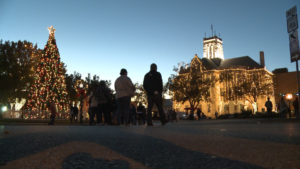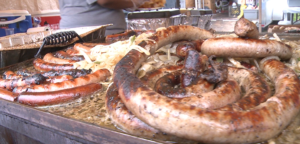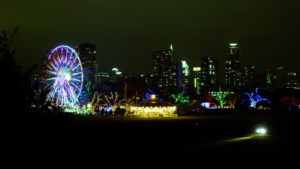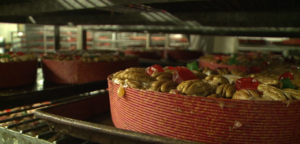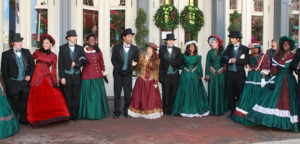ANDERSON, Texas — Getting a great dose of Texas history is easy to do in Grimes County and it all centers around an old inn that started checking travelers back in 1834.
The Fanthorp Inn in Anderson was established by Henry Fanthorp. Benjamin Baumgartner took us on a tour of the building that served so many roles in a very important time in Texas history.
First and foremost, the mind-blowing facts about this building that helped form a fine state.
“This building has existed in four countries yet has never moved,” Benjamin said. “Mexico, Texas, United States and the Confederate States.”
When English immigrant Henry Fanthorp constructed his log cabin home, he had no idea it would serve as a post office and a voting place. Nor did he know that people like Sam Houston, Zachory Taylor and Ulysses S. Grant would slumber under his roof.
Located on La Bahia Road, Fanthorp Inn was a place for all sorts of people to stop during their travels across Texas.
“Because of its position of where it is, it has been the hub of information, or it was the hub of information,” Benjamin said. “The news of annexation, the news of war again with Mexico, news of the civil war, these are things that all would have come through here at some point. This is where people would be discussing what’s going on, how it’s going, news hopefully of loved ones coming back or hopefully you’re hearing from what’s going on there.”
And hotels were a heck of lot different back then.
“They’re surprised to see the living conditions of it thinking it would be so rustic or something that ‘Oh, I wouldn’t be comfortable here,’ but thinking again from the perspective of it is this or sleeping in the open, maybe under a wagon you kind of have a new understanding for what comfort would be back then,” Benjamin said.
Keeping it true to what it was like around 1850 is what the Fanthorp Inn is fulfilling. Display what the dining room would be like, the parlor prior to privacy and life before just about every modern convenience you can think of.
“A chance to go through and see a new perspective and an appreciation for the life that we have now,” Benjamin said.
Treasa Thompson helps brings this place to life with her lovely mules.
“We used to fit nine people in this coach. Nine people comfortably,” Treasa said. “You would have three on each seat. When you put nine people in there now, you better hope three of them are kids.”
Once a month, you can get the full experience of pulling up to the Fanthorp in an old stagecoach.
“It makes it a reality,” Treasa said. “It puts you in an absolute scenario where it happened.”
Pulling a cart with 4 mules can be particularly precarious.
“Twice the amount of things that could go wrong,” Treasa said.
But Treasa knows how to sweet talk her team.
“Of course I’m a woman, I’m biased,” Treasa said. “I think that women deal with mules easier than men. We just have different tactics.”
That might come down to having a mother’s patience.
“They’re better than my two-legged kids,” Treasa said. “They mind better anyway.”
Treasa takes the stagecoach down the main drag of Anderson, a ride that is a bit smoother than the one taken all those years ago.
“When you rock, you hit a bump and you just rock,” Treasa said. “It’s not a bounce so it’s awesome.”
The wagon makes its way through town, circling the Grimes Country Courthouse and carefully cruises back to the Fanthorp.
“All those giggles right down there? That’s what’s enjoyable,” Treasa said. “You know they’re having a good time. If they can have fun and learn a little at the same time, that’s the best way to do it.”
Experiencing a stagecoach ride along a road riddled with the stories of Texas makes for an incredible journey, but with a final destination like the Fanthorp Inn, you’ll get your fill of Lone Star State folklore and fulfill a fine stop on The Texas Bucket List.
“Come out and get a little bit of history,” Treasa said. “Have a little bit of fun. Meet my kids and take a little ride with me.”
